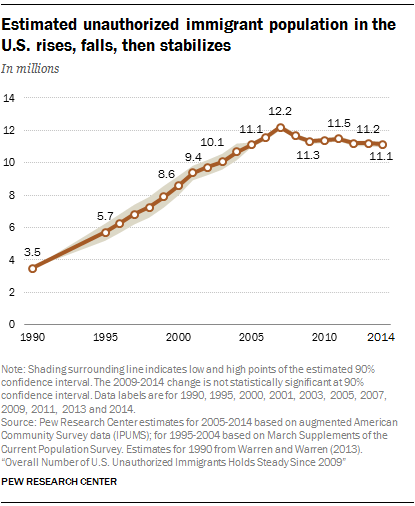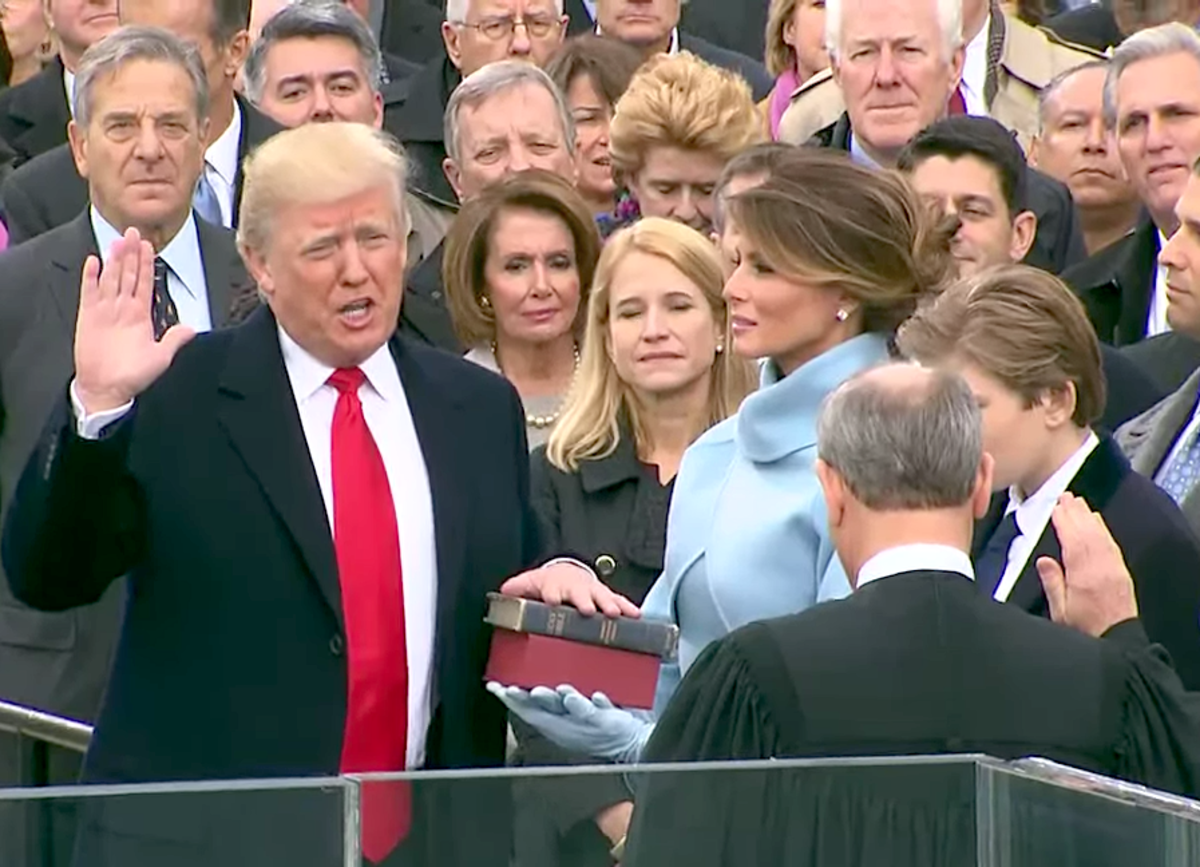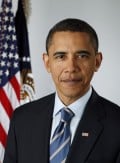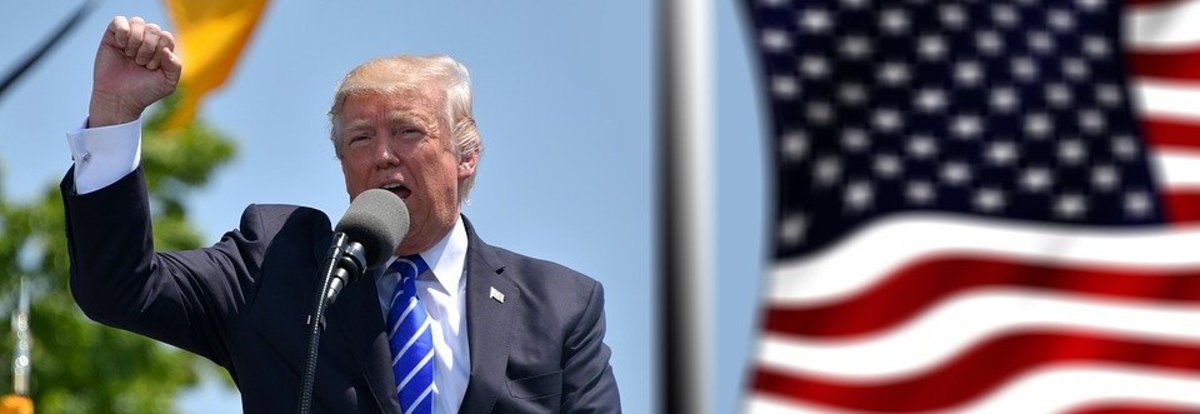Forget the Man, Why Trump’s Policies Will Fail America

During his campaign for the Presidency, Donald J. Trump has insulted or mocked immigrants, blacks, Muslims, POWs, the disabled, women and more without remorse. Past comments have exposed him boasting about being a sexual predator, supported by allegations from a dozen different victims. And he has insinuated that a loss in a “rigged” election could be remedied by “second amendment people”.
He is a candidate with no political, diplomatic, or military experience of any kind running solely on his business acumen who, as a businessman, refuses to release his tax returns as every Republican candidate has done for more than 35 years, has discriminated against minorities, considers pregnancy an inconvenience, manufactures his branded products overseas, employed illegal immigrant workforces, hires foreign guest workers rather than Americans to work his domestic resort properties, looked the other way when foreign business partners employ slave labor, bankrupted multiple businesses leaving stockholders and employees empty-handed while lining his own pockets, embezzled from his own charitable foundation while neglecting to contribute funds to the same, bullied suppliers into accepting fractional compensation from their contracted amounts, avoided paying income taxes while criticizing others for doing likewise, and is facing fraud charges from a dubious real estate “university”.
It’s not exactly a resume that screams, “Champion of the American Worker”.
He put a number of local contractors and suppliers out of business when he didn’t pay them…So when he left Atlantic City, it wasn’t, ‘Sorry to see you go.’ It was, ‘How fast can you get the hell out of here?’
— Steven P. Perskie, New Jersey’s top casino regulator in the early 1990sHis campaign for the Presidency presented a prime opportunity for him to demonstrate his support for the American small business. Instead he has exploited it as an opportunity to funnel millions of dollars to his own businesses and family and has even used the Presidential debates to plug his own branded properties.
Despite all of this, there are millions of Americans who continue to support the man in his presidential aspirations. Some are doing so for purely ideological reasons and the responsibility of the President to nominate new justices to the Supreme Court. There are others who will simply vote for the man, because he is nothing more than not Hillary Clinton. Still others find a kindred spirit in Trump’s expressions of racism, bigotry, and misogyny. However, there are many who are willing to look past Trump’s boorish and reprehensible behavior in the hopes that he will bring promised change to a fractured political system and bring about an era of unbridled peace and prosperity to the U.S.
He won’t. Instead, he could make things much, much worse. Let’s look at why.
I will build a great wall — and nobody builds walls better than me, believe me –and I’ll build them very inexpensively. I will build a great, great wall on our southern border, and I will make Mexico pay for that wall. Mark my words.
— Donald Trump, June 2015
Immigration
Trump has made immigration a centerpiece of his campaign. Claims that illegal immigrants are “pouring across our borders” have been addressed with early promises of a wall on the Mexican border, for which Mexico would pay, and a “deportation force” that would deport more than 11 million illegal immigrants in as little as two years.
Faced with the economic realities of such an endeavor, Trump has backed off this aggressive approach. While still promising the wall, Trump has shifted focus to getting out “all of the bad ones” while deciding what to do with the others “at a later date”.
The reality is that the wall, as Trump has promised it, is a non-starter for any number of political, economic, and logistical reasons, and rhetoric around the subject has soured the relationship with one of our major global trade partners. And Trump’s claim of a massive influx of illegals, while true in the 1990s and early 2000s, hasn’t held up for nearly a decade. According to Pew Research, the number of illegal immigrants in the U.S. has held steady at just over 11 million since its drop from a peak of just over 12 million in 2007. As for Trump’s promise to focus on “the bad ones,” that’s exactly what the Obama administration is doing and has been doing for years. There are those in the Latino community who refer to Obama as the “deporter-in-chief”. As of 2014, the most recent year for which numbers are available, the Obama administration had deported a record 2.4 million illegal immigrants; more in six years than the Bush administration did during its entire eight years in office. Trump even called attention to Obama’s “big league” immigration actions in the third Presidential debate, noting that, “Obama has deported millions and millions of people.”
Despite his rhetoric of change, Trump’s proposals represent little to no change at all from current U.S. policy and enforcement, a continuation of which would be expected under a Clinton administration as well.
People are coming into our country like we have no idea who they are, where they are from, what their feelings about our country is…This is going to be the great Trojan horse of all time.
— Donald Trump, October 9, 2016Syrian Refugees
Regarding refugees from war-torn Syria, Trump, once again, has walked back his initial proposal, which called for the banning of all Muslims from entering the United States, regardless of point-of-origin. His Muslim ban has morphed into a call for “extreme vetting”, stating, “we have no idea who they are, where they are from,” and that the influx of refugees will be, “the great Trojan horse of all time”.
What Trump fails to mention is that the U.S. already subjects all refugees, and particularly those from Syria and other countries in the Middle East, to an extremely extensive vetting process which includes multiple background checks, fingerprint checks, an extensive in-person interview with Homeland Security, reviews and approval from Homeland Security, and a multi-agency security check before approval is given. The process can take upwards of two years, and most do not set foot in the United States until the very end. This contrasts markedly with the much more chaotic situation in Europe where the process is complicated by geography and proximity and where asylum seekers can generally enter a country without an extensive vetting process, sometimes in a matter of days.
If a terrorist organization sought to enter the U.S. from Syria or a neighboring country, it’s highly unlikely masquerading as a Syrian refugee and being subjected to the existing in-depth and lengthy vetting process would be the option of choice.
Over the next ten years, our economic team estimates that under our plan the economy will average 3.5% growth and create a total of 25 million new jobs...It will be deficit neutral. If we reach 4% growth, it will reduce the deficit.
— Donald Trump, September 15, 2016The Economy
Trump has stated that his economic policies will generate 25 million new jobs and will be “revenue neutral”, neither reducing the debt nor adding to it. A cornerstone of his proposals is luring companies that have shifted manufacturing and operations offshore back to the United States. To do so Trump has proposed a carrot and stick approach. Neither will accomplish its intended effect.
For the carrot, Trump has proposed lowering the corporate tax rate from a high of 35% (It already starts at 15%) to a standard 15% across the board. First, no corporation is paying 35%. Show me a company paying 35%, and I’ll show you a company that needs a new accountant. And many are paying nothing at all. A report released in April of this year by the non-partisan U.S. Government Accountability Office found that 70% of all active corporations reported zero tax liability at all after tax credits are taken, credits including carry-forward losses like the ones Trump’s company leveraged to potentially pay zero taxes for nearly 20 years. When narrowed, the same study found that large, profitable corporations, the ones most likely to shift manufacturing and operations offshore, already pay an effective tax rate of 14%, lower than Trump’s proposed standard rate.
If these companies were going to “trickle-down” investments and jobs in the U.S., they would be doing it already.

Companies shift manufacturing and operations offshore, because cheap labor and cheap fuel make it more profitable to manufacture goods overseas and then ship them back to the United States. Trump’s “lower” corporate tax rate does not change either of these conditions. Companies will not shift manufacturing back to the United States out of a sense of national pride. When asked about Trump’s zero tax liability while reporting an operating loss of nearly a billion dollars in 1995, Trump adviser Rudy Giuliani replied, “you have an obligation when you run a business to maximize the profits.” Indeed. By lowering the corporate tax rate, corporations just generate more profits. It doesn’t mean they’ll spend those added profits in the U.S.
That’s where the stick comes in.
To punish companies that manufacture goods in either Mexico or China, Trump has proposed imposing a tariff of up to 35% or 45% respectively on those goods when they enter the United States. This won’t work either, for several reasons. First, such tariffs would only accomplish making foreign-made goods as expensive as domestically made goods. Even if the companies doing the manufacturing shifted the production back to the United States, bringing some jobs with them, the increased costs would be passed on to all consumers. Are you ready to pay 35% to 45% more for the products you buy in the hope that some companies might shift manufacturing back to the U.S.? Probably not.
And that’s if those companies came back to the U.S., which is a very big if. Companies could always shift their manufacturing to countries where such an import tariff didn’t exist, unless Trump wants to impose a blanket tariff on all imported goods, regardless of origin. So much for foreign relations. And, under those conditions, consumer prices would go up even further as many products manufactured in the U.S. depend on raw materials or components imported from other countries.
These countries will also likely return the favor in kind, imposing a tariff on goods exported from the United States and imported into their countries. Considering Mexico and China are two of the top three destinations for products exported from the United States to the tune of more than $350 billion annually, such reciprocation would not exactly boost our economy. So, companies could shift their foreign manufacturing to avoid the U.S. import tariffs while domestically manufactured goods would be stuck hitting the import tariffs of some of their primary global markets. Trump hopes that the mere threat of imposed tariffs will enable him to renegotiate existing trade deals. But since these negotiations are between countries, not companies, Trump won’t be operating from a position of strength. Corporations will generally seek to do what is in their financial best interest, regardless of the impact on the nation or nations (and employees) involved.
Trump is dependent on the success of the carrot and stick, both of which are likely to fail, to help pay for the tax cuts he has proposed and the massive spending increases on things like infrastructure and defense. When his policies fail to reach the 3.5% to 4% annual growth rate necessary by his own admission to reduce the deficit, the national debt will balloon further. Spending cuts and reductions in regulations in areas like energy won’t come close to making up the difference.
A Trump Administration will lift restrictions on all sources of American energy production...This will increase GDP by more than $100 billion annually and add over 500,000 new jobs annually
— Donald Trump, September 15, 2016Energy and the Environment
Trump has promised to make the United States energy independent with a focus on fossil fuels like coal, oil, and natural gas by eliminating regulation in the energy industry and thereby boosting energy production and creating millions of jobs in the process.
It won’t work.
There’s a reason gas prices have been low in recent years. The global energy market has been dealing with an oversupply of oil and gas. The introduction of fracking, an updated way of extracting fossil fuels from the ground, led to an explosion of oil and natural gas production from sources previously considered unreachable. North Dakota, a key location of new oil and gas reserves, became the nation’s fastest growing state economy in 2014. So much natural gas was being produced by January 2014 that 36% of it never reached the market and was just burned off into the air in a process called flaring. As supply outstripped demand, prices plummeted. Monthly tax revenues in the state from oil and gas extraction which had peaked at over $330 million in 2014 dropped to around $80 million earlier this year. As a result, many North Dakota oil boomtowns have been going bust.

Availability of supply is no longer an issue. It’s moderation of that supply that is bringing the market closer to balance. The International Energy Agency expects oil markets to start rebalancing next year, but forecasts a continued oversupply in natural gas until the end of the decade, as pipelines continue to come online to bring already sourced natural gas to the market.
Natural gas fracking is also the latest and largest contributor to a steady decline in coal that has been going on for decades, particularly in Appalachian states like Kentucky and West Virginia and well before Obama entered the Oval Office. While the country used 4.5 times as much coal by energy value as natural gas 20 years ago, natural gas use was expected to surpass coal for the first time ever this year according to the U.S. Energy Information Administration (EIA) in March and reported by the Wall Street Journal. The industry has also become increasingly automated and focused on less labor-intensive means of extraction, such as mountaintop removal. Appalachian coal has also been suffering from old age. The broad, surface seams of coal have been exhausted, leaving deeper and thinner seams that are much more expensive to reach. As a result, Appalachian coal has been losing out to cheaper, easy-to-extract, low-sulfur coal from Western states like Wyoming. Throw in a decrease in demand from foreign markets like China, a growing demand for renewable energy sources like wind and solar, and increases in energy efficiency, and it’s easy to see why coal companies have been increasingly filing for bankruptcy.
Trump’s deregulation proposals will change none of these market-driven conditions, but they will endanger the environment.
I would be absolutely prepared to tell those countries, ‘Congratulations, you will be defending yourself.'
— Donald Trump, July 20, 2016National Defense
The Arctic is melting. Whether you want to attribute it to human-driven climate change or not, the sea ice covering the Earth’s northern pole has been in steady retreat for years. An ice-free Arctic is now on the horizon, and an open Arctic ocean is making accessible massive undersea oil and gas reserves and shortened trade routes between Western and Eastern markets. There are five countries located within the Arctic Circle. Two of them are the United States and Russia. In August 2007, two Russian mini-submarines planted a Russian flag on the ocean floor beneath the North Pole, making a symbolic claim on the territory for Russia. It was not done on a whim.
In the wake of its invasion of Georgia in 2008, Russia has invested $600 billion in the past decade to update its aging military capabilities. And starting in 2012, Russia has increased its military exercises in the Arctic region, culminating in its largest exercise in recent memory in March 2015 which involved 38,000 soldiers, 3,360 vehicles, 41 naval vessels, 15 submarines, and 110 aircraft.
Faced with a collapsing Russian economy, thanks in part to falling oil prices and international sanctions, Vladimir Putin has sought to maintain Russia’s influence on the world stage through external aggression. Operating in unmarked military uniforms, Russia quietly invaded the Crimean region of Ukraine in February 2014 and then subsequently announced it had annexed Crimea as part of the Russian Federation. This aggression generated trepidation throughout many Eastern European countries including Estonia, Latvia, and Lithuania, all formers members of the U.S.S.R. and all current members of NATO. Tensions rose further last month when Russia moved nuclear-capable missiles into the Russian province of Kaliningrad, in the heart of Eastern Europe between NATO-member Poland and Lithuania. NATO responded just last week announcing increases in its military presence in all of these countries as well as Norway and Romania.
Complicating the situation further is Russia’s extensive involvement in the Syrian war on the side of brutal ruler Bashar Al-Assad and their cooperative bombing of the besieged city of Aleppo with little regard for civilian casualties. Russia recently withdrew a request to refuel a fleet of Russian warships in Spain after that NATO country sought to determine if the ships were to be used in additional attacks on Syria, and Russia has even threatened to shoot down any U.S. aircraft attempting to intervene militarily in the Syrian conflict. And while deemed unintentional, a Russian fighter was involved in a “near miss” with a U.S. military plane over northern Syria just last week, an event that is occurring with increasing frequency.
Against this backdrop, Donald Trump has expressed unabashed admiration for Putin, dismissed Russian hacking against American targets, casually suggested that Russia should increase its cyber attacks against the United States for political gain, and accepted Russian aggression in Syria against civilian targets (and conflicted with his running mate in the process). Specific to NATO, Trump has expressed a willingness to tell NATO countries, “Congratulations, you will be defending yourself,” if he feels the U.S. has not been “properly reimbursed,” a stance that dismisses the interests of the U.S. in NATO and likens the U.S. to a security extortion racket. All this while seemingly unaware that Russia had invaded Ukraine at all.
Trump has expressed a desire to get along with Russia, but, based on his deference to Russia on events to date, Trump appears to be willing to put Putin in the driver’s seat of such a relationship. Trump has said, “If [Putin] says great things about me, I’m going to say great things about him.”
But, considering Trump’s response to others whom he feels have slighted him in the past, what happens when Putin insults Trump?
You can tell your military expert that I’ll sit down and I’ll teach him a couple of things
— Donald Trump, October 27, 2016ISIS
Trump has consistently provided little detail regarding his plans for addressing ISIS, preferring to stay “unpredictable”. When pressed, he stated, “I know more about ISIS than the generals do,” and that his personal plan for confronting ISIS involves “bombing the sh*t” out of oil installations used by ISIS and then to “take the oil forever” in violation of international law.
During the Commander-in-Chief forum, Trump stated that, as President, the generals would be given 30 days to come up with a plan to defeat ISIS. In response to a reminder that he claimed to know more than the generals, Trump replied, “They’d probably be different generals.” Rather than adjusting his plan based on guidance from military experts, Trump would simply install his own military leaders. And, when confronted with criticism from a military expert regarding his comments on the ongoing confrontation with ISIS to take the city of Mosul in Iraq, Trump’s reply was, “You can tell your military expert that I’ll sit down and I’ll teach him a couple of things.” The military expert in question is a retired colonel and former dean of the Army War College with 45 years of experience in national security affairs.
There’s bravado, and then there’s bravado paired with ignorance and power.
If Trump had been President for the last four years, does anyone doubt we would currently be at war with Iran, a country much larger and more challenging than Iraq?
Wrap-Up
This post could go on about Trump’s criticisms of the Affordable Care Act paired with the absence of anything specific with which to replace it. Or his support for stop-and-frisk policies that, in all likelihood, violate the rights of Americans under the U.S. Constitution. Or his complete disregard for science in areas like climate change and vaccines. Or about his cavalier attitude and lack of knowledge regarding the use of nuclear weapons and nuclear proliferation in countries like Japan, Saudi Arabia, and South Korea. But hopefully, with less than a week before election day, if you’ve made it this far, this post has illustrated that, despite what you may think of the man and his personal behavior, the actual policies he has put forth won’t work either to address the needs of this great country. And that makes his character even less tolerable.
© 2016 Michael Searcy







